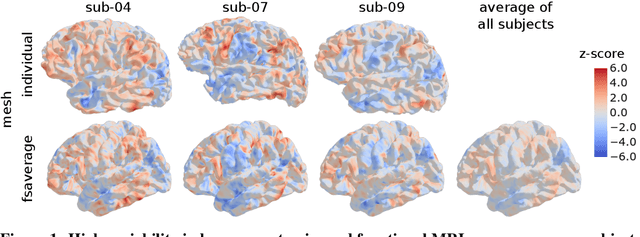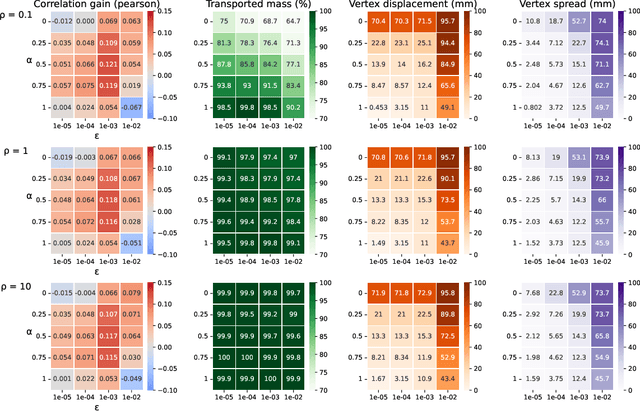Alexis Thual
Optimizing fMRI Data Acquisition for Decoding Natural Speech with Limited Participants
May 27, 2025Abstract:We investigate optimal strategies for decoding perceived natural speech from fMRI data acquired from a limited number of participants. Leveraging Lebel et al. (2023)'s dataset of 8 participants, we first demonstrate the effectiveness of training deep neural networks to predict LLM-derived text representations from fMRI activity. Then, in this data regime, we observe that multi-subject training does not improve decoding accuracy compared to single-subject approach. Furthermore, training on similar or different stimuli across subjects has a negligible effect on decoding accuracy. Finally, we find that our decoders better model syntactic than semantic features, and that stories containing sentences with complex syntax or rich semantic content are more challenging to decode. While our results demonstrate the benefits of having extensive data per participant (deep phenotyping), they suggest that leveraging multi-subject for natural speech decoding likely requires deeper phenotyping or a substantially larger cohort.
Aligning brain functions boosts the decoding of visual semantics in novel subjects
Dec 11, 2023Abstract:Deep learning is leading to major advances in the realm of brain decoding from functional Magnetic Resonance Imaging (fMRI). However, the large inter-subject variability in brain characteristics has limited most studies to train models on one subject at a time. Consequently, this approach hampers the training of deep learning models, which typically requires very large datasets. Here, we propose to boost brain decoding by aligning brain responses to videos and static images across subjects. Compared to the anatomically-aligned baseline, our method improves out-of-subject decoding performance by up to 75%. Moreover, it also outperforms classical single-subject approaches when fewer than 100 minutes of data is available for the tested subject. Furthermore, we propose a new multi-subject alignment method, which obtains comparable results to that of classical single-subject approaches while improving out-of-subject generalization. Finally, we show that this method aligns neural representations in accordance with brain anatomy. Overall, this study lays the foundations for leveraging extensive neuroimaging datasets and enhancing the decoding of individuals with a limited amount of brain recordings.
Aligning individual brains with Fused Unbalanced Gromov-Wasserstein
Jun 19, 2022



Abstract:Individual brains vary in both anatomy and functional organization, even within a given species. Inter-individual variability is a major impediment when trying to draw generalizable conclusions from neuroimaging data collected on groups of subjects. Current co-registration procedures rely on limited data, and thus lead to very coarse inter-subject alignments. In this work, we present a novel method for inter-subject alignment based on Optimal Transport, denoted as Fused Unbalanced Gromov Wasserstein (FUGW). The method aligns cortical surfaces based on the similarity of their functional signatures in response to a variety of stimulation settings, while penalizing large deformations of individual topographic organization. We demonstrate that FUGW is well-suited for whole-brain landmark-free alignment. The unbalanced feature allows to deal with the fact that functional areas vary in size across subjects. Our results show that FUGW alignment significantly increases between-subject correlation of activity for independent functional data, and leads to more precise mapping at the group level.
 Add to Chrome
Add to Chrome Add to Firefox
Add to Firefox Add to Edge
Add to Edge